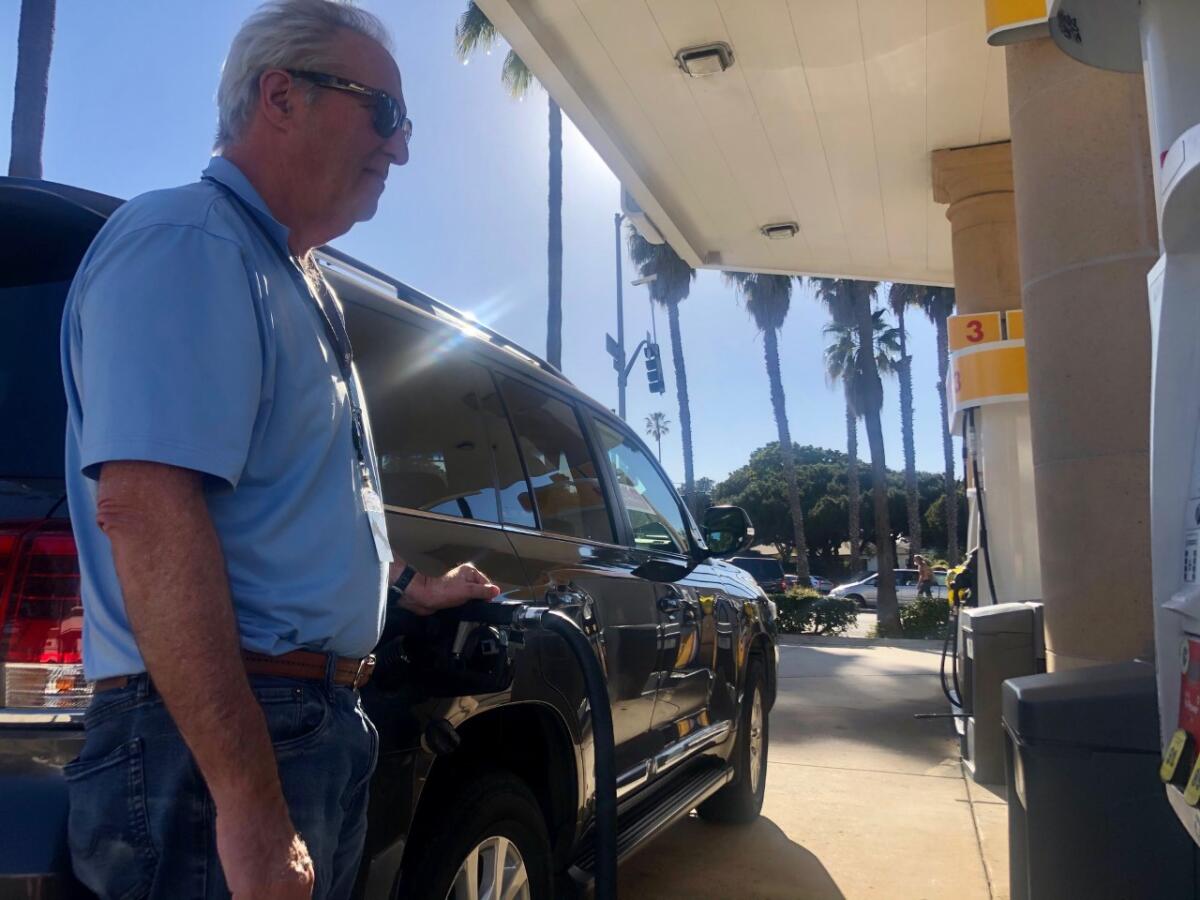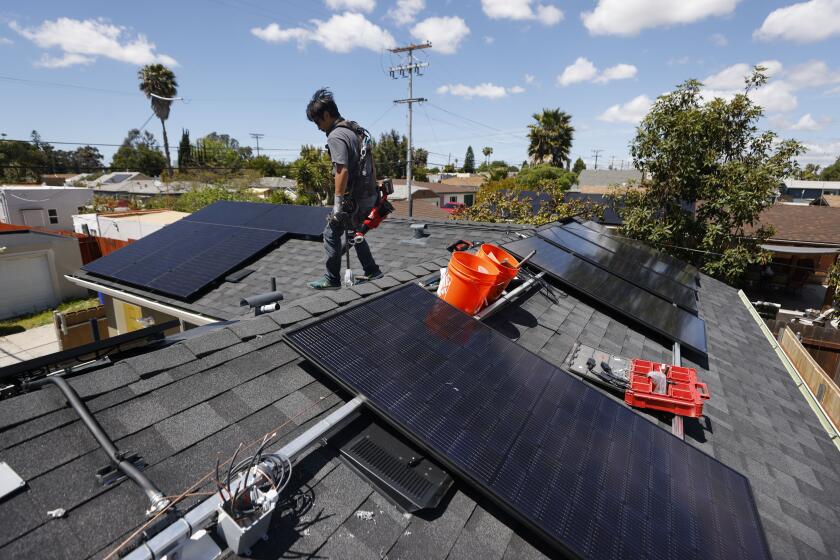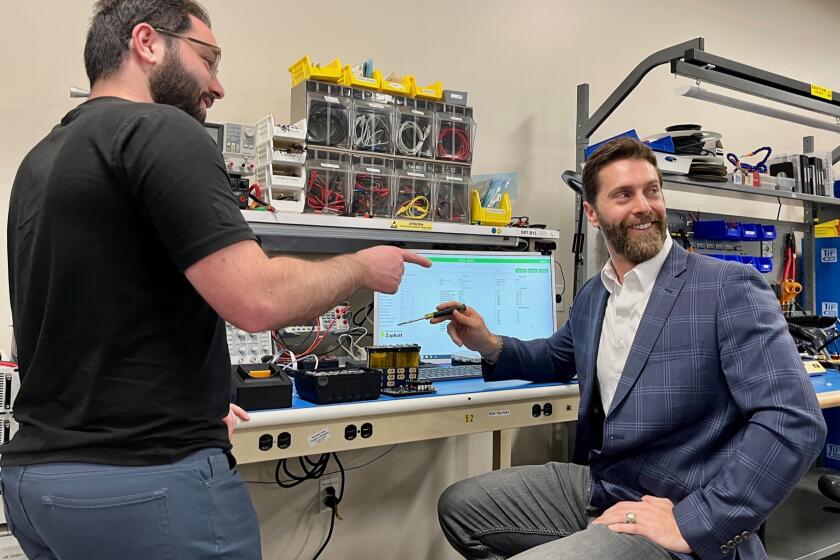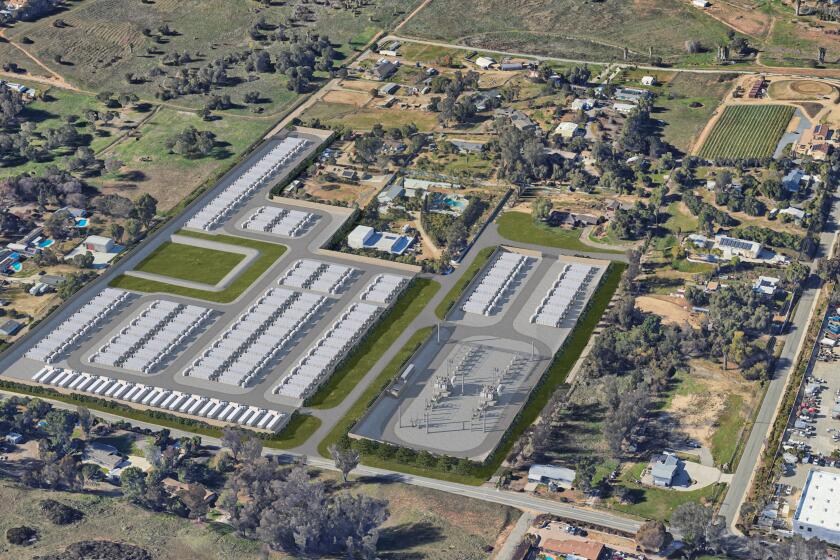$6-per-gallon gas and beyond? San Diego average prices hit new high, with ‘no quick fix’ in sight

The price has increased for 32 straight days; up 52.3% from a year ago.
Just 20 days after the average price for regular-grade gasoline in San Diego County reached $5 per gallon, another record was set Thursday when drivers in the area saw the price rise to within two cents of $6.
The average price for regular stood at $5.98 on Thursday morning, according to AAA. It’s the 32nd straight day prices have gone up.
“It’s ridiculous,” said Bella Mena of La Jolla as she filled up her tank at a neighborhood Shell station. “It seems like this happens every decade or so where gas prices are going to continuously rise but it’s a big jump so it’s a shock to everybody.”
And the outlook for any sizable reduction in prices is not promising given the current geopolitical uncertainty.
“With this chaos, there really isn’t a quick fix,” said Bryce Erickson, senior vice president of Mercer Capital, who has more than 20 years of experience in the oil and gas industry. “It could be this time next year before things really start to kick in. So for the next 12 months, I don’t see relief.”
California imports roughly one-half of the oil that supplies the state’s refineries, a percentage higher than most states and the Golden State’s taxes and fees at the pump are higher, too.
“Unfortunately, Californians are going to have to be thinking about how to manage their budgets because this is not a temporary thing,” said Erickson, who heads Mercer Capital’s energy group.
Global oil prices, already on the rise as economies recovered from the onset of the COVID-19 pandemic, accelerated this winter amid the prospect of a Russian attack on Ukraine and then spiked after Feb. 24 when Vladimir Putin launched the invasion.
The price of oil is linked to the price of gasoline and the price of West Texas Intermediate — the benchmark for domestic crude — rose from $92.10 a barrel the day before the invasion to as high as $130.50 during trading on March 7. The price dipped below $100 for a few days last week but has since climbed back to the $110 to $115 range.
The day before the Russian invasion, the average price in the San Diego area came to $4.76 and by March 4, it hit the $5 mark. Thursday’s average price is 52.3 percent higher than a year ago, when a gallon cost $3.93, according to AAA.
Marie Montgomery, spokeswoman for the Auto Club of Southern California, said recent issues at a pair of refineries have contributed to higher prices in the region. On March 6, a key unit at the PBF Energy refinery in Torrance went down and this week officials at the Valero refinery in Wilmington said planned maintenance at the facility needs to be extended for a longer period than expected.
“It’s very expensive out there,” Montgomery said, advising motorists to slow down to get better mileage. A 2018 AAA study showed drivers can waste up to one-third of their vehicles’ fuel economy by driving 80-85 mph on the freeway compared to 65 mph.
“You really want to watch the speeding at this price point,” Montgomery said. “It’s just burning money.”
The statewide average stood at $5.88 on Thursday, which is $1.64 higher than the national average.
California’s prices are higher than the national average for a number of reasons.
A recent study by Stillwater Associates, a transportation fuels consultancy in Irvine, estimated that $1.26 of every gallon comes from a combination of state taxes and fees, in addition to the 18.4 cents-per-gallon that is levied through the federal gas tax.
The cost of producing the state’s unique blend of gasoline that reduces air pollution also contributes to the higher price.

The recent surge in prices has also revived debate over what UC Berkeley professor Severin Borenstein has called a “mystery gasoline surcharge” — an unexplained difference in price, even after all the taxes and fees are taken out of the equation.
Back in 2015, an explosion at an Exxon Mobil refinery in Torrance knocked out about 10 percent of state’s gasoline supply, driving up prices. After normal operations resumed, prices went down modestly. But Borenstein’s research indicated prices did not completely return to their previous, pre-explosion, levels.
And that residual amount — the mystery surcharge — has never gone away.
Borenstein’s calculations say the differential averaged at least 26 cents per gallon in 2016, 2017 and 2018 and shot up to 44 cents a gallon in 2019. Last week, he estimated the differential has reached 71 cents per gallon. which translates to Californians paying an extra $28 million per day.
“There is something else going on beyond this that’s holding our prices up so high,” Borenstein told the Union-Tribune in May 2020. “We need to keep digging on this.”
Consumer groups have accused oil companies and refineries of artificially keeping California prices high. Others have offered other theories for the differential, such as the fact that California has fewer gas stations per driver than other states, leading to less competition between stations and, thus, higher prices.
State Sen. Ben Allen, D-Santa Monica, has introduced a bill that would require the state’s five refineries to report how much crude they refine into gasoline each month, how much they paid for each barrel and how much they make.
“There continues to be a big black hole when it comes to data with relation to the oil and gas industry for how they price gas at the pump for regular Californians,” Allen said at a news conference earlier this month. “We’re asking the oil companies on behalf of California drivers, let’s end the games of smoke and mirrors, open your books, show the public your true cost of doing business.”
The legislation, Senate Bill 1322, has been referred to the Senate Energy, Utilities and Communications Committee.
Skyrocketing gasoline prices have contributed to a resurgence in inflation, hitting consumers hard.
With an estimated state budget surplus of $30 billion, a number of proposals to offer financial relief from high gas prices are floating around the state Capitol in Sacramento.
Gov. Gavin Newsom on Wednesday proposed an $11 billion package that includes the state issuing up to $800 in debit cards. Newsom’s plan would start in July and give $400 per motorist but cap the distributions to two registered vehicles per household. Drivers of electric vehicles and other cars and trucks that don’t use gas would also qualify.
Assemblymember Kevin Kiley, R-Rocklin, introduced legislation to suspend the state’s gasoline excise tax — currently at 51.1 cents per gallon — for six months but on a party-line vote, the Assembly last week declined to fast-track the bill.
One group of Democrats has proposed a $400 rebate to every California taxpayer while Assembly Speaker Anthony Rendon, D-Lakewood, and Senate President Pro Tem Toni Atkins, D-San Diego, have pushed for a $200 refund for each taxpayer and dependent and excluding the payments from households with incomes that exceed $250,000.
Get U-T Business in your inbox on Mondays
Get ready for your week with the week’s top business stories from San Diego and California, in your inbox Monday mornings.
You may occasionally receive promotional content from the San Diego Union-Tribune.










